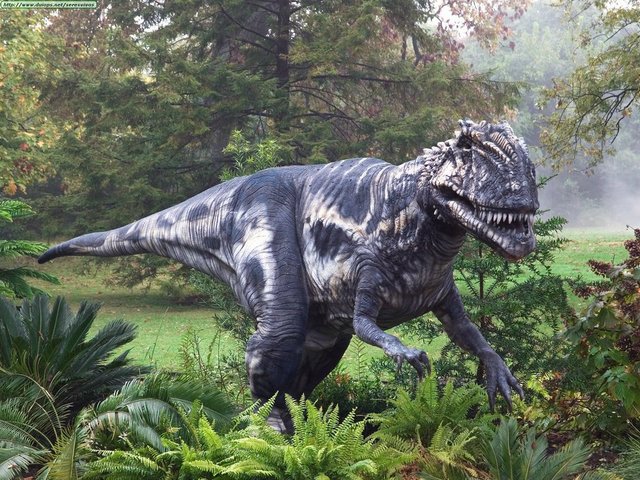Post by dinosauria101 on May 21, 2019 9:15:39 GMT 5
Pacific Walrus - Odobenus rosmarus divergens
Walruses occupy a nearly circumpolar region of the Arctic. Three distinct subspecific populations are recognized: 1) Atlantic (Odobenus rosmarus rosmarus), which lives in the eastern Canadian Arctic and Greenland east to Novaya Zemlya; 2) Pacific (O. r. divergens), living in the Bering Sea and adjacent Arctic Ocean; 3) Laptev Sea (O. r. laptevi), occupying the Laptev Sea, north of Siberia. Some taxonomists do not recognize the Laptev Sea population as a separate subspecies. Walruses prefer to inhabit areas with ice floes in the shallower regions near the coasts of Arctic waterways. Their seasonal migration patterns coincide with the changes in the ice. In the winter, walruses move south as the Arctic ice expands, and in the summer they retreat north as the ice recedes. This migration can cover distances of 3000 km. Individuals concentrate where the ice is relatively thin and dispersed in the winter. In the summer time, bulls may use isolated coastal beaches and rocky islets. Cows and young prefer to stay on ice floes in all seasons. While some outsized Pacific males can weigh as much as 2,000 kg (4,400 lb), most weigh between 800 and 1,680 kg (1,800 and 3,700 lb). The Atlantic subspecies weighs about 10–20% less than the Pacific subspecies. The Atlantic Walrus also tends to have relatively shorter tusks and somewhat more flattened snout. Females weigh about two-thirds as much, with the Atlantic females averaging 560 kg (1,200 lb), sometimes weighing as little as 400 kg (880 lbs), and the Pacific female averaging 794 kg (1,750 lb). Length ranges from 2.2 to 3.6 m (7.2–12 ft). It is the second largest pinniped, after the elephant seals.

Megalosaurus bucklandii
Megalosaurus (meaning "Great Lizard", from Greek, μεγαλο-/megalo- meaning 'big', 'tall' or 'great' and σαυρος/sauros meaning 'lizard') is a genus of large meat-eating theropod dinosaurs of the Middle Jurassic period (Bathonian stage, 166 million years ago) of Europe (Southern England, France, Portugal). It is significant as the first genus of dinosaur (outside of birds) to be described and named. n many ways, Megalosaurus was your garden-variety theropod dinosaur, indistinguishable from a host of other big-headed, large-toothed carnivores of the late Jurassic period. What really sets this predator apart is the fact that it was the first dinosaur ever to be discovered and named: a fossilized femur of Megalosaurus was dug up in England in 1676, but it wasn't until 150 years later--after further discoveries--that it was given its name, Greek for "great lizard," by the early paleontologist William Buckland. Size about 30 feet long with weight estimates varying from 700 kg (1,500 lbs) to 1,100 kg (2,400 lbs).

Credit to Wikipedia
NOTE: I know this matchup may seem a bit strange, but most people on Carnivora accepted pinniped vs dinosaur as a viable matchup type, so I think this'll work
Walruses occupy a nearly circumpolar region of the Arctic. Three distinct subspecific populations are recognized: 1) Atlantic (Odobenus rosmarus rosmarus), which lives in the eastern Canadian Arctic and Greenland east to Novaya Zemlya; 2) Pacific (O. r. divergens), living in the Bering Sea and adjacent Arctic Ocean; 3) Laptev Sea (O. r. laptevi), occupying the Laptev Sea, north of Siberia. Some taxonomists do not recognize the Laptev Sea population as a separate subspecies. Walruses prefer to inhabit areas with ice floes in the shallower regions near the coasts of Arctic waterways. Their seasonal migration patterns coincide with the changes in the ice. In the winter, walruses move south as the Arctic ice expands, and in the summer they retreat north as the ice recedes. This migration can cover distances of 3000 km. Individuals concentrate where the ice is relatively thin and dispersed in the winter. In the summer time, bulls may use isolated coastal beaches and rocky islets. Cows and young prefer to stay on ice floes in all seasons. While some outsized Pacific males can weigh as much as 2,000 kg (4,400 lb), most weigh between 800 and 1,680 kg (1,800 and 3,700 lb). The Atlantic subspecies weighs about 10–20% less than the Pacific subspecies. The Atlantic Walrus also tends to have relatively shorter tusks and somewhat more flattened snout. Females weigh about two-thirds as much, with the Atlantic females averaging 560 kg (1,200 lb), sometimes weighing as little as 400 kg (880 lbs), and the Pacific female averaging 794 kg (1,750 lb). Length ranges from 2.2 to 3.6 m (7.2–12 ft). It is the second largest pinniped, after the elephant seals.
Megalosaurus bucklandii
Megalosaurus (meaning "Great Lizard", from Greek, μεγαλο-/megalo- meaning 'big', 'tall' or 'great' and σαυρος/sauros meaning 'lizard') is a genus of large meat-eating theropod dinosaurs of the Middle Jurassic period (Bathonian stage, 166 million years ago) of Europe (Southern England, France, Portugal). It is significant as the first genus of dinosaur (outside of birds) to be described and named. n many ways, Megalosaurus was your garden-variety theropod dinosaur, indistinguishable from a host of other big-headed, large-toothed carnivores of the late Jurassic period. What really sets this predator apart is the fact that it was the first dinosaur ever to be discovered and named: a fossilized femur of Megalosaurus was dug up in England in 1676, but it wasn't until 150 years later--after further discoveries--that it was given its name, Greek for "great lizard," by the early paleontologist William Buckland. Size about 30 feet long with weight estimates varying from 700 kg (1,500 lbs) to 1,100 kg (2,400 lbs).

Credit to Wikipedia
NOTE: I know this matchup may seem a bit strange, but most people on Carnivora accepted pinniped vs dinosaur as a viable matchup type, so I think this'll work










